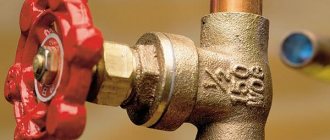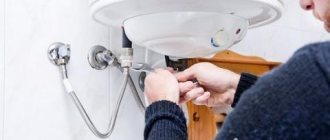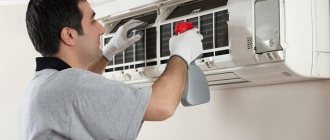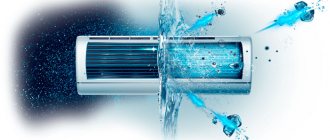Last updated April 2, 2022 at 11:57 am
When operating gas fueled vehicles, drivers often encounter incorrect operation or breakdowns of the gas equipment. The efficiency of this equipment largely depends on the serviceability of gas injectors. Their operation takes place under conditions of high temperatures and sometimes low-quality fuel.
Owners of gas-powered vehicles are advised to know how to repair, clean and adjust 4th generation LPG gas injectors with their own hands. This will help in some situations and save money.
Types and device
The variety of injectors in terms of technical characteristics, as well as by manufacturer, is large. There are examples with a rare device (for example, “petal” injectors from Matrix), but there are two main types:
AEB rack device
membrane (disc-shaped), popular representatives AEB (AEB) ECO/EVO, Landi Renzo (Landi Renzo) GIRS 12;
Barracuda injector design
rod ones - Valtak (Valtek) type 30 and many similar ones, for example Rail. In the same series are such samples as Barracuda.
The operating principle of gas injectors is essentially the same; signals (short-term electrical impulses) from the equipment's ECU are sent to the electromagnet coil. During this process, the rubberized core/piston in the rod or plate inside the nozzle moves, opening the seat hole for gas to escape. Closing occurs under the influence of a return spring.
Since the fuel at the outlet of the gearbox is already in an evaporated state, its atomization, as in the gasoline version, is not required. The volume of gas supplied is a multiple of the amount of gasoline (about 200 times). For this purpose, the cross-section of the dosing holes of gas injectors is made much larger, and also, unlike gasoline injectors, the coil resistance of the gas part is 1-3 Ohms, because the control process occurs as a result of pulse width modulation (PWM). The petrol one has 15-16 ohms.
Material
An important parameter is the material of the product. The operation of all equipment is carried out in various temperature fluctuations: from -200C with a cold engine to +1000C after warming up. The gas fuel itself contains impurities (for example, paraffin or oil), which lead to contamination of parts.
Under these conditions, the metal will deform, which is not acceptable. For example, one of the elements of an injector is a plunger that creates fuel pressure. It makes translational movements, with a stroke length of 0.5 mm. Any change in physical dimensions will affect the performance of the system. Therefore, it is desirable that the material has a minimum coefficient of thermal expansion.
In budget versions of injectors, it is possible to reduce the plunger stroke to 15-20%. This shortens the life of the injector, increasing its wear.
First, a little introduction...
Everyone knows that it’s not just gasoline and diesel fuel that we’re running out of. A long time ago, gas stations learned to “inflate” our brother, not with gas, but with air, mixing various nasty things into the gas fuel, which adversely affects the condition of the gas equipment and the entire engine as a whole.
So one day it was noticed that the engine was unstable on gas; when switching to gas, the engine stalled, and there was simply no idle. Among other things, the dynamics deteriorated, traction disappeared, gas consumption increased and dips appeared during acceleration. Moreover, the above-described “glitches” appeared, as a rule, “in the cold”. Some time after the engine warmed up to the optimal temperature, all these “sores” practically disappeared.
The problem did not allow me to live and drive any car. Having scoured the Internet, I found similar cases, as well as reviews from those who “overcame” this problem. Suspicion fell on the filter (how to change filters and drain condensate is written here and here), as well as gas injectors. The filters were replaced, by the way, during the replacement a large amount of resin was discovered in the filter elements, this alarmed me and made me think. If there is so much “poop” in filters, then what is in gas injectors? The decision was made - it was necessary to clean the gas injectors, as well as their further calibration. What came of it - read on...
What is an injector emulator
For 2nd generation gas internal combustion engines, an electronic device is installed to simulate gasoline injectors. This device is called an LPG injector emulator. For the 3rd and 4th generation it is integrated into the electronic gas control unit.
Emulators depend on the number of engine cylinders because it is necessary to read the signal to supply the appropriate fuel to each cylinder using a switch on the dashboard. This device allows you to set the interval for switching from gasoline to a gas mixture. You can set the delay in the range of 0-5 seconds.
The task of the emulator, when turning off the gasoline injectors, is to transmit signals to the control unit that simulate the operation of the injectors.
Repair of gas automotive equipment
Before proceeding to a detailed analysis of specific symptoms caused by the malfunction of certain parts of the gas equipment: gearbox, injectors, electronic unit, cylinder and multi-valve, it is worth noting three associated factors:
Some of them cause intense corrosion, while other resinous substances clog passage tubes and rubber valve plugs that are difficult to clean. By skipping the next change of gas filters in a car, the owner will reduce the gas filter of any manufacturer and generation to a terrible state, even with first-class installation and fine tuning.
DON'T WASTE MONEY ON REPAINTING! Now you can remove any scratch from the body of your car in just 5 seconds.
Signs of malfunction
The fact that the injectors have begun to work incorrectly can be noticed by every motorist who has at least a little experience in using gas equipment. Externally, problems in their work appear as follows:
- unstable engine operation;
- no idle speed;
- lack of traction;
- increased fuel consumption;
- deterioration in engine performance, etc.
All these signs indicate that gas injectors need immediate cleaning. The reason why they become clogged may be improper maintenance of gas equipment, the use of low-quality filters for the vapor and liquid fractions of fuel, or the use of cheap liquefied gas of inadequate quality to refuel a car.
Malfunctions in the gas injection system
The LPG gas injector, if there is a malfunction in the injection system, is completely repairable. But for this you need to have a repair kit of gas injectors on hand.
Since the correct and coordinated operation of the entire LPG system is determined by the injectors, you need to learn how to diagnose their malfunctions.
It could be:
- nozzle contamination;
- imbalance of the rack;
- open circuit;
- coil short circuit;
- electronic problems.
There can be many reasons, but if you ignore them and do not react in time, you can limit yourself to not just replacing parts of the injection mechanism, but say goodbye to the entire power unit. Therefore, if in doubt what exactly the fault is, it is better to take the car to an electronic stand, where mechanics will describe the breakdown in detail.
It might end up figuring out how to clean your gas injectors, or maybe you'll need an advanced repair. But, in any case, this is more profitable from an economic point of view than replacing the entire engine.
Although the new generation of gas equipment is already equipped with systems that themselves monitor and diagnose problems. But still, if the car is retrofitted with a gas installation, inspecting the system itself is absolutely not an unnecessary manipulation. It happens that during the investigation, minor little things come to light, which, however, can lead to serious damage.
Also, when purchasing injectors, you need to read reviews of the manufacturer and compare prices for such parts, since cheap parts can cause big problems. It is best if you have any questions regarding HBO, contact the station, where specialists can advise on the operation of the HBO system.
On our website there are articles about gas injectors from companies:
- Lovato;
- Valtek;
- AEB;
- Barracuda;
- OMVL.
Do-it-yourself cleaning
Having discovered obvious signs of clogging, many car enthusiasts try to clean gas injectors themselves. The process of their cleaning consists of several stages:
- Close the supply valve located on the gas cylinder. This must be done to prevent gas from entering the engine.
- Use up all the fuel remaining in the line. When the gas runs out and the car switches to gasoline, you need to force the switch to gas several more times so that all the remaining gas is used up.
- Mark the wires going to the coil and the ramp with injectors differently. This way you will avoid any tangles in the wires when they are reinstalled. It is convenient to use electrical tape or markers of different colors for marking.
- Remove the ramp with injectors, unscrew the calibration jets.
- Remove the corkscrew rings and spool, unscrew the guides.
- Remove the rods, springs and O-rings. In this case, you must remember from which injector this or that rod is removed.
- Remove dirt and deposits from the rods, avoiding getting the rubber seals wet.
- Clean the inside of the nozzle body. A rag is best for cleaning, since using it does not leave fabric lint on the parts.
- Restore the arrangement of all parts in reverse order.
After all the injectors are returned to the ramp, all that remains is to install it in its original place and connect the wires correctly. Before using the equipment, be sure to check the system for leaks
To do this, apply a soap solution to all connections and turn on the flow valve. Bubbles will appear in places where gas will escape. These places need to be additionally fixed.
Disassembling gas injectors
The first step to removing the ramp from the car is to shut off the gas supply to the LPG line by closing the flow valve on the gas cylinder.
- Exhaust all the gas from the line; to do this, start the car with the valve closed and wait until it switches to gasoline, then force the system to switch to gas two or three more times.
- Before disconnecting the wires and removing the ramp, be sure to mark which wire belonged to which of the gas coils. This can be done using a marker or multi-colored electrical tape. When assembling, you must accurately determine whether the wire belongs to one or another coil.
- Unscrew the fasteners and remove the ramp. When unscrewing the clamps, you will hear residual gas escaping - this is a normal situation.
- Using a 12mm wrench, unscrew the calibration jets.
- Remove the corkscrew rings, carefully folding them so as not to lose them. Remove the coils. If you made marks on the coils with a marker, mark which coil was in which place so as not to confuse them during assembly. If you made marks on the ramp itself, the order of installing the coils may not be followed.
- Using a 14 key, unscrew the guides and carefully remove them. If one rod is being replaced, during disassembly, it is imperative to mark the rod-seat pair so that they are not confused during reassembly. If all parts are replaced, the order may not be followed. Remove the rods and springs from the guides.
- Conduct a visual inspection of the rods and rubber bands, determining whether you need to use a repair kit or not. If the rubber band is completely worn out, metal comes into contact with metal, resulting in a characteristic “clicking” sound.
- If the rod itself has a satisfactory appearance, you can replace only the rubber band and the spring (also in case of wear); to do this, remove the old rubber band from the rod with a sharp object (an awl) and place a new one in its place. If the mileage of the injectors is significant, the rod should also be replaced.
- Carefully inspect and replace worn parts with new ones on all injectors, then reassemble the ramp in reverse order.
It is imperative to adjust the gas injectors before installing them on the car.
Read about how to do it yourself here!
Gas injector repairs have been completed. If you have any questions during the repair process, ask them in the comments to the article and we will be happy to answer them.
Equipment for home use
Ideally, you can buy a professional washing stand for chemical cleaning, but its price deters many car owners. In addition, such specific equipment will only have to be used periodically, and the costs will never be recouped. However, you can ask your friends - some have a homemade installation, which they will probably provide free of charge. If there are no such people in your immediate environment, you will have to, with patience, desire and available materials, assemble an improvised washing stand yourself. Here are its components.
Liquid pump with pressure gauge.
PET mineral water bottle.
Rubber hose - 2 m is enough - and 4 clamps to secure it.
Two "nipples" similar to those used in a tubeless tire.
Wires with terminals and other small devices.
Despite its simplicity, such a “homemade” installation in most cases is not inferior in efficiency to industrial equipment. Especially if high-quality chemicals are used for washing. As for the use of various additives, which are simply added to the fuel tank, and then supposedly the injector is cleaned “automatically,” this is not so. Of course, in this case, the fuel itself somewhat cleans the injection system, in addition removing carbon deposits from the valves. But still, this method rather belongs to the category of preventive measures, rather than effective methods of cleaning injectors.
Adjustment
- Adjusting Valtek gas injectors begins with unscrewing the adjusting jets from them. This can be done using a 12 key.
- Next, install the extension rod and secure the dial indicator to the ramp using the adapter sleeve.
- Check that the extension rod is touching the gas injector rod. If the arrow of the device begins to move, it means that contact has been achieved.
- Set “0” on the indicator device. Apply power to the controlled part for up to 1 second .
Do not apply power for more than 1 second, this may lead to failure of the part that is being adjusted!
- Write down the value obtained on the dial indicator as a result of the measurement.
- Do the above for all engine gas nozzles, recording the values.
- Next, using an internal hexagon screw located at the end of the electric coil, we set the required stroke of the rods. By rotating clockwise, we reduce the stroke of the rod, and vice versa, if we rotate counterclockwise, we increase the stroke. We set the same stroke of the rods, but not more than 0.7 mm, according to the recommendations of Valtek.
Below is a table for adjusting the armature stroke depending on engine power.
- After adjusting all gas injectors, measurements must be repeated. And, if necessary, adjust to obtain the same stroke for all injectors.
After obtaining the desired result, screw the jets back in and install the assembled ramp back into the car. We connect all the lines, open the flow valve on the cylinder, wash the system and turn on the ignition. When gas leaks are detected, we fix them without fail.
If you still have any questions, ask them in the comments to the article, and we will be happy to answer them.
Second cleaning method
The unit must be cleaned every 6 months, but at least once a year. If there is an agreement on gas supplies, then the company’s specialists must carry out timely maintenance of gas boilers. If you want to clean the column yourself, then you must follow the following instructions:
- 1 Initially, you need to close the gas; the tap is usually located under the device. Then you need to loosen the bolts that secure the casing, then unscrew them and clean everything with a needle with 4 edges. Today it is possible to buy a special brush for cleaning boilers, which is more convenient to use than a needle. The next step is to wash the burner sections in a degreaser. If the wick is clogged, it also needs to be cleaned with a needle or metal scraper. At the last stage, you need to assemble all the parts of the column in the reverse order and fill the unit with water before starting the gas.
- 2 To clean the burners in the pipe through which the gas flows, you can use a stiff brush. The pipe must be cleaned with wire and rinsed with water and solvent. The upper area of the burner is cleaned with fine sandpaper.
- 3 Units that are cleaned in a timely manner will last much longer. The fire will be glare-free and uniform. If it is noticeable that the column is smoking, the fire is uneven, weak or, conversely, strong, then it needs to be cleaned. An uncleaned unit is dangerous.
Why do you need to flush the injectors?
During the combustion of the air-fuel mixture, a tar deposit is formed, which is deposited not only in the combustion chambers of the power unit, but also in the nozzles, gradually contaminating them. The diameter and shape of the hole in the nozzle through which fuel is supplied changes over time. This not only leads to insufficient supply, but also to changes in the spraying process. The mixture becomes heterogeneous - instead of fuel mist, streams of gasoline are supplied. There may be excess gasoline or oxygen in the mixture. This negatively affects engine performance, fuel consumption, etc. In winter, when fuel evaporates worse, pollution occurs more intensely.
To restore normal engine operation, you sometimes need to clean the injector, removing all deposits inside their channels.
The component is designed so that when using “ideal” gasoline, cleaning is not necessary. For example, high-quality European fuel saves EU car enthusiasts from cleaning car engine injectors.
Removing the ramp
At this point, the washing device is ready and you can begin to disassemble and remove the injectors. To remove them, you will have to remove the fuel rail.
We will consider all this using the example of a VAZ-2110 car with an 8-valve engine.
POPULAR WITH READERS: How to properly check the engine oil level in winter and summer
To do this you will need:
- Set of open-end wrenches;
- Screwdrivers, flat, Phillips;
- Set of hexagons.
The sequence of work is as follows:
- Relieve the pressure in the fuel rail. One of the simplest ways to do this is to disconnect the wiring from the fuel pump and start the engine. During operation, it will remove all the gasoline, completely relieving the pressure. You need to keep the engine running until it stalls, after which you should try to start it again; if it does not start, you can proceed to further work.
- Next, we disconnect the air filter pipe, the wiring of the ramp, the idle speed control, the TPS sensor, and the pipe from the fuel pressure regulator. Additionally, you can remove the accelerator cable.
- Using open-end wrenches, unscrew the fuel pipes going to the ramp. It is advisable to place a rag under the place where they connect, since there may still be some gasoline left in the ramp.
- Unscrew the bolt of the pressure plate of the fuel pipes.
- Using a hexagon, unscrew the two ramp mounting bolts.
- Carefully pull the ramp up (along the axis of the injectors). In this case, you will have to make an effort, since the nozzles sit quite tightly in their seats. After this, we move the ramp a little to the side.
- To remove the injectors, first disconnect the wiring from them. They are held in the ramp using clips that need to be removed. To do this, use a flat screwdriver to move these clamps along the ramp, after which it can be removed.
- We take out the nozzle. It sits tightly in the ramp, so we remove it with light rocking. In order not to mix up the elements, it is better to remove and wash them one by one.
On engines of other vehicles, removal of fuel cells for washing may be carried out slightly differently. But the essence remains the same - you need to remove the ramp to remove the elements.
That's when I encountered the problems of HBO.
The car is equipped with Lovato LPG with Matrix injectors. To be honest, I didn’t appreciate this package at the time, because... I was far from all this equipment and had never encountered it. Now I can already say that Matrices are cool injectors, although they are no longer produced.
Initially, the car switched to gas and because of the HBO, it was running. But after working a little, the engine began to work normally. The former owner of the car immediately made me happy, saying that the injectors needed to be changed, because... The gas at our gas stations is bad and it’s time for them to be replaced. When I went to the LPG service station, they immediately changed the filters (they really had some tar in them), and the master told me not to bother with replacing the injectors, but to drive until the LPG stops working completely. Well, that's what I did. Naturally, the further we went, the more problems there were with HBO.
When switching the LPG, the car was shaking and twitched while driving, but after a couple of hundred meters the operation of the LPG leveled out, and you could drive around calmly. Although due to the HBO, the revs fluctuated for some time.
So autumn passed unnoticed and winter began.
While warming up in the morning, the car switched to HBO and stalled. Although no. At first, she was Troil, specifically Troil. Well, a month later she was completely deaf. Only specific warm-up saved the day, and after a few kilometers, it was possible to switch to gas. But the HBO really didn’t want to switch, the car almost stalled.
Well, when the frosts came, you yourself understand what happened: I switched to gasoline.
General information
Gas injectors are special gas equipment units that are responsible for the dosage of fuel, essentially being high-speed valves. Thanks to their proper operation, the required gas-air mixture ratio in the internal combustion engine is ensured. Such mechanisms began to be used in the 4th generation of HBO.
Some of the most popular are stock models from the companies Valtek (Valtek), Rail (Reil), Digitronic (Digitronic), OMVL (OMVL), Lovato (Lovato). Their undoubted advantage is that they are easy to repair, which consists of washing, replacing the repair kit and adjusting, unlike non-separable injectors such as BRC (BRS), Barracuda (Barracuda) and the like.
results
At idle, the engine no longer stalls, gas consumption has returned to normal, and when “cold,” the engine operates the same way as when the internal combustion engine is warm. Simply put, everything has returned to normal, dynamics, traction, everything is as it was before. I'm happy! Thank you for your attention, see you again at HBOshnik. I hope the article was useful to you!? Bye.
When operating gas fueled vehicles, drivers often encounter incorrect operation or breakdowns of the gas equipment. The efficiency of this equipment largely depends on the serviceability of gas injectors. Their operation takes place under conditions of high temperatures and sometimes low-quality fuel.
Owners of gas-powered vehicles are advised to know how to repair, clean and adjust 4th generation LPG gas injectors with their own hands. This will help in some situations and save money.
A little theory
So, in general terms, what is a rod gas injector (injector).
The design of a gas injector is similar to that of a gasoline injector and consists of:
- housings,
- electromagnetic coil (low resistance of the order of 1-3 Ohms),
- rod (plunger) with seals,
- springs,
- fitting with a calibrated hole.
Often, for convenience, several injectors are collected into one common set - a ramp, mainly by the number of cylinders (if the engine is in-line) or by the number of cylinders in a row (opposite and V-shaped engines).
The rod coil operates on the principle of a simple solenoid valve: when power is supplied to the coil, the solenoid overcomes the force of the rod return spring, and by retracting the rod, it opens the supply of propane-butane gas through the calibration hole into the engine intake manifold. Since the injector electric coil has low resistance, the electrical signal is supplied to it not in one, but in several short pulses.
Rod injectors are among the cheapest and most repairable. However, due to the peculiarities of their design, they are also the “slowest”.
Do-it-yourself adjustment of Valtek Type 30 gas injectors
Successful products Valtek Spa Unipersonale
The Italian company Valtek Spa Unipersonale, created in the 90s of the last century, produces high-quality gas equipment sets that have a long service life. Valtec injectors meet quality standards of the European Union and America.
Having its own research laboratory allows the company to produce safe, high-tech products, which are mainly exported.
The basis of Valtek gas injectors is a rod made of durable metal with a rubber tip. This design eliminates gas leakage. The electromagnetic coil is secured with a retaining ring. Special screws allow you to adjust the fuel supply; they have nothing to do with fixing.
Ramps are available that include 2, 3, 4 nozzles. You can choose products that match the number of engine cylinders.
The ramp includes a set of nozzles for the manifold, but calibration fittings, the diameter of which can be from 0.75 to 3.0, must be purchased separately. The diameter can be selected according to the table or drilled according to the power of the car’s power plant.











